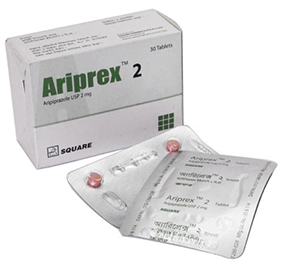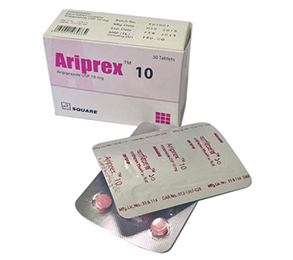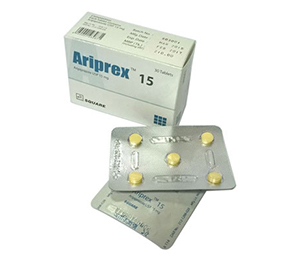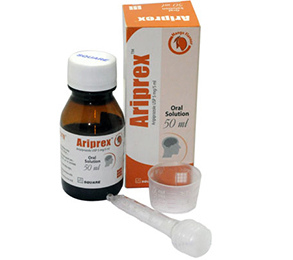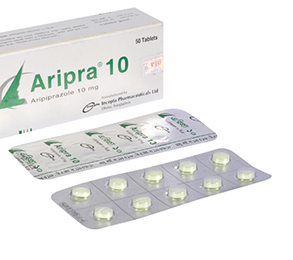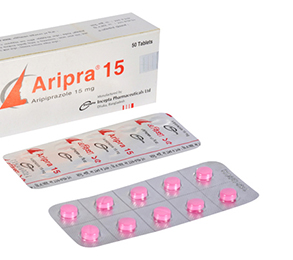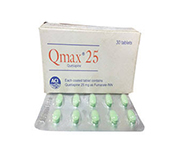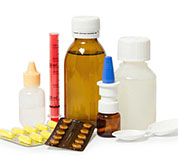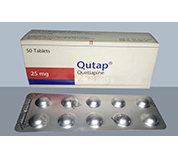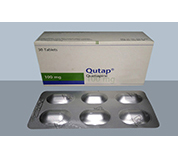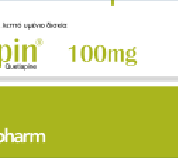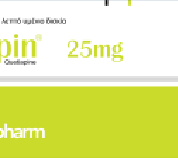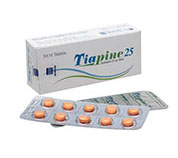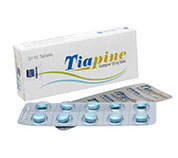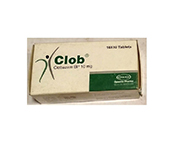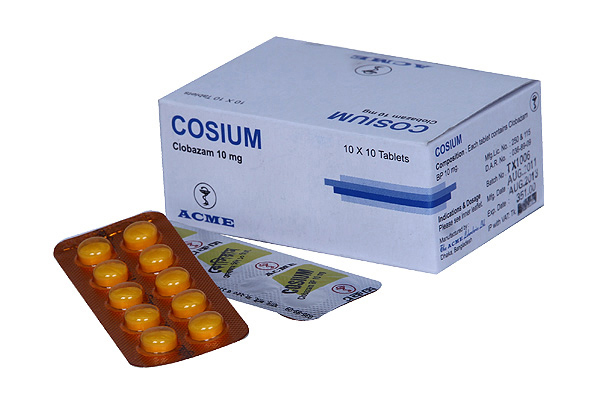Convules Syrup 200 mg/5 ml 1 Pcs
Alternative products
Sodium Valproate
Composition
Sodium Valproate tablet: Each enteric-coated tablet contains Sodium Valproate BP 200 mg.
Sodium Valproate syrup: Each 5 ml syrup contains Sodium Valproate BP 200 mg.
Sodium Valproate controlled release 200 tablet: Each enteric-coated controlled release tablet contains Sodium Valproate 200 mg as Sodium Valproate BP 133.2 mg & Valproic acid BP 58 mg.
Sodium Valproate controlled release 300 tablet: Each enteric-coated controlled release tablet contains Sodium Valproate 300 mg as Sodium Valproate BP 199.8 mg & Valproic acid BP 87 mg.
Sodium Valproate controlled release 500 tablet: Each enteric-coated controlled release tablet contains Sodium Valproate 500 mg as Sodium Valproate BP 333 mg & Valproic acid BP 145 mg.
Indications
Sodium Vaiproate oral is indicated for the treatment of all types of epilepsy, e.g.
- Partial seizures
- Absence seizures (petit mal)
- Generalized tonic-clonic seizures (grand mal)
- Myoclonic seizures
- Atonic seizures
- Mixed seizures that include absence attack
- Prophylaxis of febrile convulsion
- Prophylaxis of post-traumatic epilepsy.
It is also indicated in the treatment of bipolar disorder & prophylaxis of migraine.
Pharmacology
Sodium Valproate, the active ingredient of this preparation is endowed with anti-epileptic activity against a variety of seizures. The mechanism by which Sodium Valproate exerts its anti-epileptic effects has not been established. However, it has been suggested that its activity is related to increase brain levels of gamma-aminobutyric acid (GABA).
Dosage & Administration
Sodium Valproate tablets may be given once or twice daily. Sodium Valproate syrup should be given in divided doses.
Epilepsy-
- Adults: Initially 600 mg daily given in 2 divided doses, preferably after food, increasing by 200 mg/day at 3-day intervals to a maximum of 2.5 g daily in divided doses until control of seizure is achieved. Usual maintenance dose is 1-2 g daily (20-30 mg/kg daily)
- Children (up to 20 kg): Initially 20 mg/kg daily in divided doses, may be increased provided plasma concentrations monitored (above 40 mg/kg daily also monitor clinical chemistry and hematological parameters).
- Children (over 20 kg): Initially 400 mg daily in divided doses increased until control (usually in the range of 20-30 mg/kg daily) Maximum 35 mg/kg daily.
Febrile convulsion: 20-30 mg/kg/day in 3 divided doses.
Bipolar disorder: Initially 20-30 mg/kg/day in 2-3 divided doses; adjust dosage in 3-5 days. Maintenance dosage is 1000-2000 mg/day.
Prophylaxis of migraine: 300 mg twice daily, although some may require 1000 mg daily.
* চিকিৎসকের পরামর্শ মোতাবেক ঔষধ সেবন করুন'
Interaction
Sodium Vaiproate appears to act as a non specific inhibitor of drug metabolism. Drugs to which it interacts most significantly are Phenobarbital, Phenytoin, Warfarin, Aspirin etc.
Contraindications
Sodium Valproate is contraindicated to patients who have known hypersensitivity to the drug and liver dysfunction. Use of Sodium Valproate is restricted during pregnancy and in women of childbearing potential.
Side Effects
The most common side effects are anorexia, nausea and vomiting. However, these side effects are minimized with the use of enteric coated tablets. Effects on the CNS include sedation, ataxia and tremor. These symptoms occur infrequently and usually respond to a decrease in doses. Rash, alopecia and stimulation of appetite have been observed occasionally. Sodium Vaiproate has several effects on hepatic function of which elevation of liver enzymes in plasma is observed in up to 40% of patients and often occurs asymptomatically during the first few months of therapy. Rarely a fulminate hepatitis that may be fatal may develop. Children below 2 years of age with other medical conditions and those being treated with multiple antiepileptic agents are specially prone to suffer from hepatic injury, acute pancreatitis and hyperammonemia have also been frequently associated with the use of Sodium Valproate.
Pregnancy & Lactation
Sodium Vaiproate crosses the placenta and in humans, exposure to valproate in the first trimester has been associated with neural tube defects such as anencephaly and spina bifida in newborn. Pregnant women treated with Sodium Vaiproate should be offered to estimate serum a-fetoprotein. Sodium Valproate is excreted in breast miik. However, breast-feeding by a mother taking Sodium Valproate probably causes no risk to the child.
Precautions & Warnings
Liver functions should be monitored before therapy and during first 6 months especially in patients most at risk, No undue potential for bleeding before starting and before major surgery must be ensured, Care should be taken in renal impairment, pregnancy, breast-feeding and systemic lupus erythematosus. Sodium Valproate is partially eliminated in the urine as a ketone metabolite, which may lead to a false interpretation of the urine ketone test. Sudden withdrawal of therapy should be avoided. Sodium Valproate should not be used during pregnancy and in women of childbearing potential.
Therapeutic Class
Primary anti-epileptic drugs
Storage Conditions
Do not store above 30°C. Keep away from light and out of the reach of children.
- Type Syrup
- Tag
- Morbi leo risus
- Porta ac consectetur ac
- Vestibulum at eros






